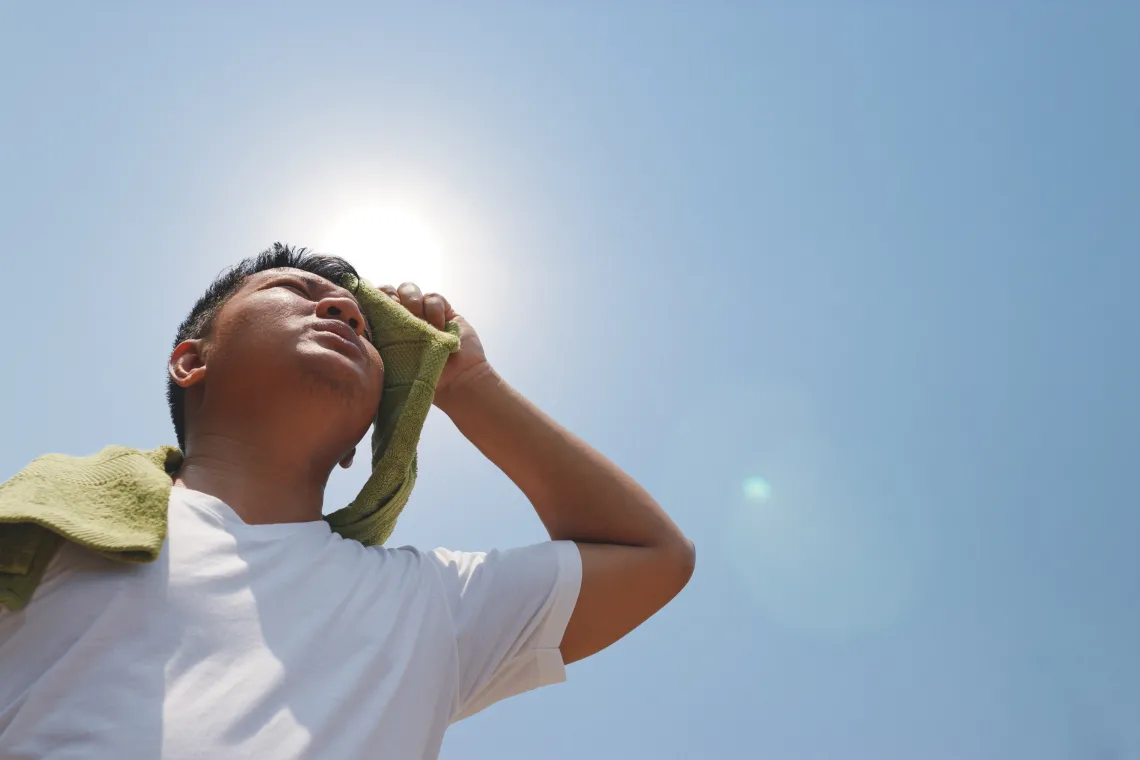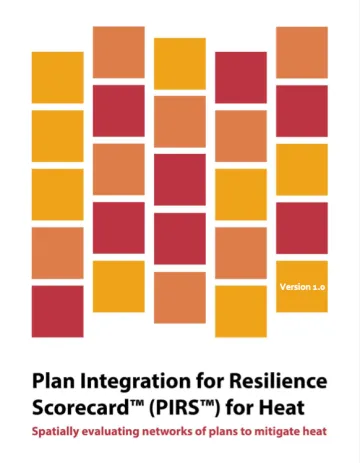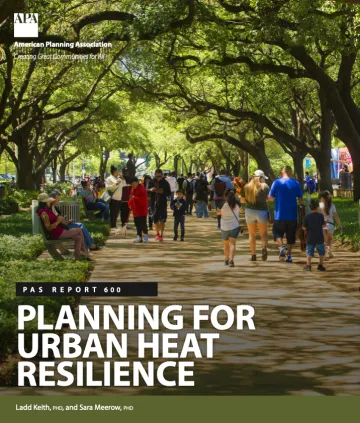How to Build More Heat-Resilient Communities: A Guidebook

For those living in southern Arizona, dealing with seasonal bouts of extreme heat is just part of the experience.
But, as the impacts of climate change are increasingly felt here in Tucson and in communities around the world, the need to anticipate and plan for the challenges associated with higher temperatures, more frequent heat waves, and prolonged heat events is only going to grow more urgent over time.
Ladd Keith, faculty research associate for the Environmental Policy Program at the Udall Center and assistant professor at UArizona’s College of Architecture, Planning and Landscape Architecture, is working with a team of researchers including Sara Meerow, associate professor at Arizona State University’s School of Geographical Sciences and Urban Planning, to improve our understanding of heat policy and governance and help communities increase their heat resilience, making them safer and more comfortable as temperatures rise.
Facing Rising Temperatures Head-On

According to Keith, efforts to mitigate the negative impacts of a changing climate have primarily focused on things like flood control, increasing resilience to hurricanes, preventing and controlling wildfires, dealing with drought and facing the challenges of rising sea levels. However, relatively little attention has been given to addressing the issue of increased heat. At least, that is, until recently.
“It’s a little bit ironic,” Keith told the Washington Post this summer, “because the fingerprint of climate change is literally rising temperatures. Yet that’s the last thing that we’ve planned for.”
Not only are temperatures rising for the entire planet, but the impact of those temperature increases are more pronounced in urban areas. It’s a phenomenon known as the “urban heat island” (UHI) effect, and it’s caused by the abundance of heat-trapping materials like asphalt and concrete, the way that urban areas are designed and built, and the loss of natural landscapes. The end result is cities that are as much as 7.2 degree Fahrenheit (4 degrees Celsius) hotter than the surrounding rural areas during the day and as much as 4.5 degrees Fahrenheit (2.5 degrees Celsius) warmer at night.
To help address the UHI effect and other issues associated with rising temperatures, Keith and his colleagues are looking at a number of ways that planners and developers can mitigate and manage the effects of extreme heat.
Some of these methods include planting more trees, painting or coating streets so that they retain less heat, and developing “cool corridors” that are more safe and comfortable for pedestrians and cyclists – all of which are efforts that could produce the dual benefit of 1) minimizing the negative public health impacts of heat on low-income community members that lack access to other forms of transportation while also 2) reducing carbon emissions from cars by encouraging more people to use environmentally friendly means of transportation.
Resources for Planning Professionals

Recent strides have made Keith and other heat researchers optimistic about the prospects for the future of heat-resilient community planning. For example, Phoenix, Arizona; Miami-Dade County, Florida; and Los Angeles, California have all created positions for officials dedicated to heat mitigation and planning since October of last year.
Still, there is plenty of work to be done when it comes to addressing the impacts of extreme heat on urban communities.
To help facilitate that effort for planners across the nation and beyond, Keith and Meerow co-authored a Planning Advisory Service (PAS) report on the subject of “Planning for Urban Heat Resilience” and worked with a team of researchers to compile a “Plan Integration for Resilience ScorecardTM (PIRSTM) for Heat”, both of which can be downloaded for free on the American Planning Association website.
Together, these resources outline the threats posed to communities by the increased frequency of extreme heat events, offer numerous strategies for mitigating those threats, and provide a framework for addressing heat resilience in urban planning.

To download the free PAS report and PIRSTM for Heat, check out the American Planning Association page on heat resilience here.
You can also learn more from Keith and Meerow on this subject by reading their interviews with UA News, the Christian Science Monitor and The Washington Post.

